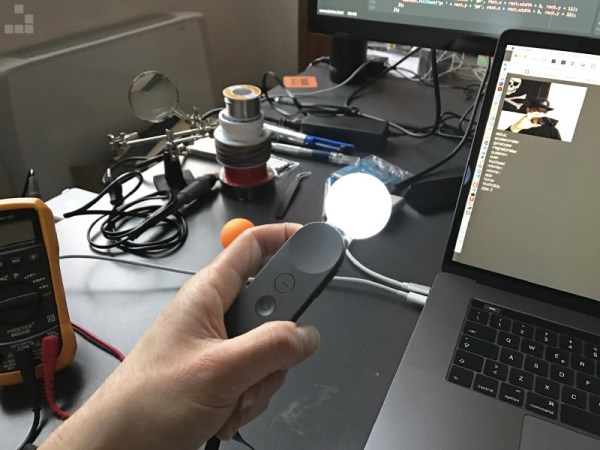[Matteo] has just released a new installment of his Google Daydream VR controller hack, which we first covered last year (when he got it working with iOS). This time around he’s managed to forge a half Daydream, half PlayStation Move controller hybrid.
The original controller only managed a mere 3 DOF (Degrees of Freedom) using the internal accelerometer; although this conveyed rotational motion around the 3 axis, transitional information was completely lacking. [Matteo] resolves this by forming a simple positional marker out of a white LED enclosed in a standard ping pong ball; He tracks this setup using an iSight camera.
To gel everything together, he adds motion tracking to his already extensively developed software stack, which enables him to unshackle the Daydream controller from Android. He deciphers the Bluetooth packets and streams the sensory information straight to a web browser over a webSocket connection.

The results are quite impressive and the tracking is smooth. Not only does this add to the final goal of hacking his way towards a platform independent VR motion controller, he aptly gets some inspiration from Sony, extends Google’s hardware and even manages to use Apple’s webcam along the way. How’s that for carving passages between the walled gardens of consumer electronics?
Continue reading “Ping Pong Ball Improves The Google Daydream Controller”













